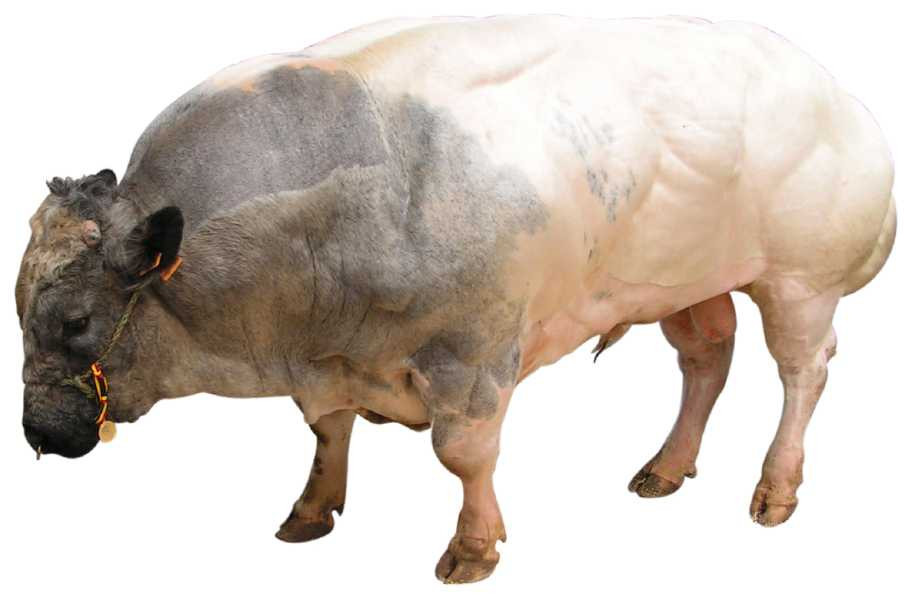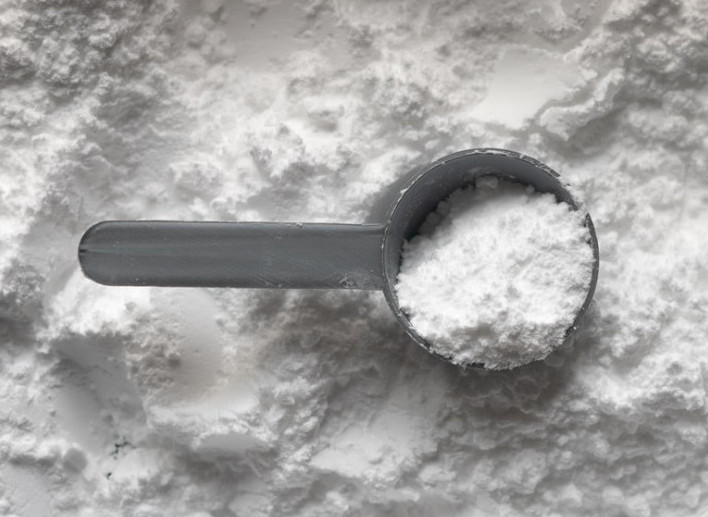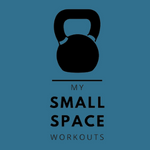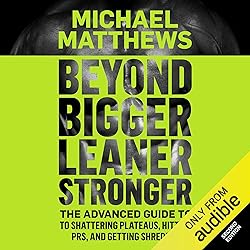Many of us have wondered whether it’s possible to reduce myostatin naturally. It’s no wonder, because since it’s discovery in the late 1990s, Myostatin has been touted as the Holy Grail of muscle growth and physique enhancement. Animals that have a naturally occurring mysostatin deficiency have dramatically enhanced levels of muscularity and lower levels of fat compared to their normal counterparts.
Humans can reduce myostatin naturally by introducing numerous lifestyle changes and dietary interventions. This includes using creatine supplements, undertaking resistance training and stopping smoking. Read on to discover
Why Should I Want to Reduce Myostatin?
Take a look at this picture of a Belgian Blue cattle – a variety with a natural myostatin mutation. As you can see, it’s hench!

Imagine if there was a way for you to reduce your mysostatin, so that every gram of protein you ate, every rep of every exercise lead to muscle growth like you’ve never known!
And what would you be prepared to do to achieve that kind of muscle growth?
Lower myostatin levels have the potential to completely transform your physique.
So is there a way to reduce myostatin naturally or even a way to inhibit myostatin totally, so that the average person can benefit from these impressive gains?
How to Reduce Myostatin (7 WAYS)
The information in this article is relevant to everybody who wants to be their very best. It’s not targeted at bodybuilders exclusively. Anybody pursuing any kind of physique improvement needs to know this information if they want to accelerate their body transformation.
Quit Smoking!
If you smoke: stop! Now!
This study contains the following statements:
- “Smoking causes multiple organ dysfunction…”
- “Smoking impairs muscle protein synthesis and increases the expression of myostatin…”
If you smoke, show yourself some love and commit to quitting.
Aside from the many serious health conditions linked to smoking, it’s now clear that smoking increases myostatin expression and sabotages your efforts in improving your physique.
Quit the Splits!
If, like me, you grew up idolizing the bodybuilders of the 1990s, then split routines will be familiar to you. A split routine is where the body is split up into separate parts, and only one or two body parts are trained per session.
If you’re still training in this way, it’s time to think again.
This study took 40 men and separated them into four groups, each training:
- upper body only
- lower body only
- upper and lower body
- control group did no training
The results were fascinating.
Both the upper body only group and the lower body only group saw an increase in muscle mass and an alteration of the follistatin to myostatin ratio.
However, the change in these endocrine markers is approximately twice as large if upper body and lower body training is combined.
So full body routines are the way to go if you want to inhibit myostatin and gain muscle.
Creatine
Creatine is a natural substance that has been found to enhance performance in strength training. As a supplement it has been widely used since the 1990s and is generally considered to be safe. It isn’t considered to be useful in improving endurance performance.
The effectiveness of creatine isn’t universal and there are some people who don’t derive any benefit at all from supplementing with it.
In my own experience however, I have found it to be incredibly effective in improving strength and building muscle.
In this study creatine supplementation was found to enhance the effect of exercise on reducing serum levels of myostatin.
If you’re interested in creatine, you may want to read our latest article on creatine and whether it causes headaches (spoiler: it doesn’t, but the article covers the latest research on creatine and you REALLY don’t want to skip this one).
Trimethylglycine (TMG)
If you’ve not heard of it before, you may want to explore supplementation with trimethylglycine (TMG), also known as betaine.
So, how does TMG work its magic? There are a few potential mechanisms that researchers have identified. First, TMG is a methyl donor, meaning it can transfer a methyl group to other molecules in the body. This process can lead to increased methylation of the myostatin gene promoter, ultimately resulting in a reduction of myostatin production.
Another way that TMG may lower myostatin levels is by activating the mTOR signaling pathway. This pathway is a key regulator of protein synthesis, and myostatin is known to inhibit it. By promoting protein synthesis, TMG may help counteract the effects of myostatin and lead to increased muscle growth.
In addition to these mechanisms, TMG has also been shown to have antioxidant properties that can help reduce inflammation and oxidative stress in the body. Myostatin has been linked to increased inflammation and oxidative stress, so reducing these factors could help lower myostatin levels and promote muscle growth.
Finally, TMG can also help reduce levels of the amino acid homocysteine in the body. High levels of homocysteine have been linked to impaired muscle function, so by reducing these levels, TMG may help promote healthy muscle function and growth.
Fish Oil and Selenium
In a study from 2015 involving cancer ridden mice who were wasting away, it was found that supplementing their diets with fish oil and selenium lowered their myostatin. The study found that “the combination of the selected nutrients (fish oils and selenium yeast) not only attenuates muscle protein degradation but also stimulates protein synthesis…“
While I’ve not found any human studies considering the effect of fish oils and selenium on myostatin levels in humans, this is now on my radar and I’ll update this article as soon as I find any such studies.
However, given that good quality fish oil and selenium supplements from reputable brands are safe and offer numerous health benefits, it would be worth including these in your supplement regimen.
A combination of these supplements would certainly be safer (and possibly more effective) than trying some of the more ‘experimental’ supplements that make wild claims about being able to lower your myostatin. SARMS, I’m looking at you!
In fact, you don’t even need to buy a selenium supplement as you can get a ton on the stuff from eating a maximum of 4 Brazil nuts per day. A single Brazil nut contains on average 175% of the required amount of this mineral so 4 will easily cover your needs.
Living to Lower Myostatin (My Experience)
Back in around 2009, I cleared out my garage to make room for some weights and began following a full body strength training plan. I was also supplementing with creatine, primarily to help me get through the arduous workouts.
As the weeks rolled by and I steadily increased the amount of weight on the bar each session, after just a couple of months, I was amazed to find myself lifting far beyond my previous personal bests on all major lifts.
I recall a friend who I’d not seen for over a year calling by and being visibly shocked at the change in my appearance. He asked me whether I was using steroids (I wasn’t) – such was the increase in my muscle mass.
Back then, I hadn’t even heard of myostatin, but in hindsight, I can see that I had inadvertently incorporated most of the components required to reduce myostatin and was enjoying the resultant gains.
So I want to encourage you to incorporate these principles into your own life so that you too can benefit from lower myostatin.
An Apple a Day
One other thing. There is some suggestion that there are certain foods that block myostatin.
Some of the most interesting nutrients identified are called catechins, which are a type of flavanoid (chemicals found in plants). They are notably found in teas, fruits and vegetables – apple peel is a particularly rich source.
Some of the foods that are particularly high in catechins include:
- Green tea: Green tea is one of the richest dietary sources of catechins, particularly epigallocatechin gallate (EGCG), which is known for its potent antioxidant and anti-inflammatory effects.
- Cocoa and dark chocolate: Cocoa and dark chocolate contain flavanols, which are a type of flavonoid that includes catechins. The higher the percentage of cocoa solids in the chocolate, the more catechins it is likely to contain.
- Berries: Many types of berries, including raspberries, strawberries, and blueberries, contain significant amounts of catechins. These flavonoids are believed to contribute to the many health benefits associated with consuming berries.
- Apples: Apples are another good source of catechins, particularly the peel. In fact, the catechin content of apples is comparable to that of green tea.
- Red wine: Red wine contains a type of catechin called catechin gallate, which is believed to contribute to the many health benefits associated with moderate wine consumption.
- Cherries: Tart cherries in particular have been found to contain high levels of catechins.
- Nuts: Some types of nuts, including almonds and pecans, are rich in catechins.
- Legumes: Some types of legumes, such as black beans, kidney beans, and lentils, are also good sources of catechins.
Overall, incorporating these foods into your diet can help you increase your catechin intake and reap the potential health benefits associated with these powerful antioxidants.
So should you go out and binge on apple peel? No. But you should be focusing less on the amount of protein you consume and more on the variety of vegetables and fruits you eat.
The body of research grows by the month supporting the synergistic effect of combining different fruits and vegetables.
Your body is amazing and will reward you handsomely for exercising it correctly and feeding it correctly.
Reduce Myostatin: The Bottom Line
As you can see there are plenty of things you can do that will lower your myostatin levels in a meaningful way. Follow the tips I’ve set out in this article and you WILL see changes in your muscle mass and reductions in bodyfat.
It seems to me that a decrease in myostatin levels is the natural consequence of making the right choices in terms of diet and exercise. So begin to make the right choices today and start your journey to looking like a Belgian Blue!
And if you’ve put the lessons from this article into practice and have reaped the benefits, let me know in the comments. I’d love to hear from you.
Unlock Your Full Potential with ‘Beyond Bigger Leaner Stronger’ – Yours Free!
As we delve into the groundbreaking ways to naturally reduce myostatin and supercharge your muscle gains, there’s another tool you can’t afford to miss.
Michael Matthews’ ‘Beyond Bigger Leaner Stronger’is your roadmap to breaking through every barrier that stands between you and your ultimate fitness goals.
This isn’t just any fitness book; it’s a meticulously crafted guide that debunks the myths holding you back from peak performance and physique.
When you sign up for Audible today, you can claim this invaluable resource for free, along with a comprehensive PDF guide to accompany your fitness journey.
It’s truly a no-brainer offer to kickstart your transformation into a stronger, leaner, and more muscular you. Why wait?
Embark on your journey to fitness excellence with Matthews’ expert guidance and the bonus PDF, all at no cost. Claim your free copy now and start shattering those plateaus!
To your health!





I think this post is very useful because a lot of people are burdened with how to reduce myostation. I like all your advice because it primarily refers to health, which is most important, and then appearance. We all need to be the best version of ourselves and feel good in our skin.
Absolutely! That’s what I’m all about: health first and feeling good in your own skin. Thanks so much for the comment!
HI
Very informative and thank you for the same. people with muscular atrophy can definitely benefit i suppose not sure whats TMG and how do you get it
i think its better to stick to natural foods like nuts and berries.
Hi Ashok,
Thanks so much for your thoughtful comment, I’m glad you found the article informative. Your approach towards preferring natural foods like nuts and berries for health and fitness is something I respect and advocate as well.
To address your query about TMG, it stands for Trimethylglycine, a molecule found in many foods such as beetroot and spinach. It’s believed to potentially lower Myostatin levels, hence its mention in our discussion. But I understand the preference to stick to common foods, and not everyone is comfortable adding supplements.
That being said, I do want to emphasize again that I highly recommend creatine. Despite being a supplement, it’s derived from amino acids that are naturally found in the body and in various foods like meat and fish. Creatine is one of the most well-studied and reliable supplements for enhancing muscle growth and performance, making it a great addition to a natural approach towards fitness.
In fact, given its muscle-enhancing benefits and that it is one of the few supplements with research to support a link with lower myostatin levels, creatine could certainly be beneficial for people suffering from muscular atrophy, as you mentioned.
Thank you for joining this conversation, Ashok. Please feel free to ask if you have any other questions or concerns. Stay fit and healthy!
To your health,
Matt
Hi,
In your opinion, what is the best delivery system for using Creatine? Capsules, bulk Powder?
Thanks in advance,
Charlie
Hi Charlie.
Thanks for stopping by.
It’s a great question, and whilst I used to swear by Creatine Ethyl Ester tablets because they provided the famous creatine pump without the infamous creatine trumps(!), I have more recently reverted to bulk powder.
I mix 5g of micronized creatine in a pint of water with some TMG and chug it down.
I’m seeing excellent results: no bloating, no flatulence and it’s much more cost effective than capsules. As happy as I am with my own gains using creatine, you want to see the gains my 14 year old son is getting – he’s ripped!!
I believe that micronized creatine like Naturebell Creatine is much more easily digestible than the powders of the 90’s and noughties that I grew up on – and makes capsule delivery unnecessary.
I hope this answers your question.
All the best
Matt